#japanese internment
Text
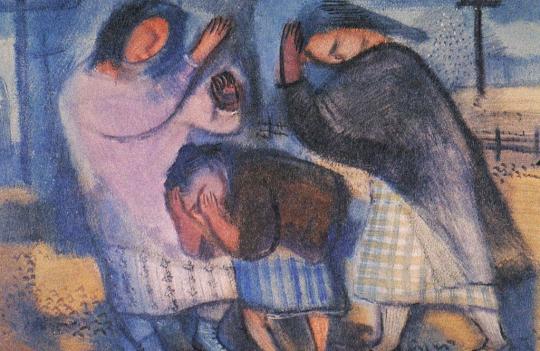
Miné Okubo
Dust Storm
[n.d.]
Evacuation Series
pastel
14 x 20 in
145 notes
·
View notes
Text
Over drinks and in the DMs, writers of marginalized communities swap our horror stories. Our books will be rounded up for listicles promoting Pride Month or Black History Month or AANHPI Heritage Month, our identities the focal point rather than our work. And how disheartening, to know that we will always be limited this way. Our marketing budgets are smaller, we know this. We’re less likely to be sent on tour. We know this. We are less likely to have advanced reader copies, an essential promotional tool, made for distribution to booksellers and reviewers. We know this.
And we know full well that our invitation to the stage is conditional.
You have to read this piece RIGHT NOW. It's important and urgent and utterly amazing and infuriating.
#quotes#politics#publishing#racism#japanese internment#love in the library#maggie tokuda-hall#writing#books
161 notes
·
View notes
Text
this is kind of a spitball but does anyone remember learning about the Japanese internment camps in WW2 and how all American-born Japanese citizens, including children and infants, were kept there on suspicion of being spies in the war? how “anyone with a drop of Japanese blood” qualified for incarceration? and everyone naturally responded to this with “how can a child or baby be a spy?” “how does being slightly Japanese make you a spy?” and everyone could so easily see the unfairness of that, but now with the case of Palestinian children and infants and American-Palestinian citizens, I have seen grown adults claim that the carpet bombings and air strikes and shootings and stabbings are all somehow fair, justified, deserved, etc. because they “grow up to be terrorists,” and it’s “Allah’s punishment for their sins.” that tiny little children “brought it on themselves” because god forbid a resistance group resists genocide.
we could see the unfairness then, enough for a fucking formal apology to be issued for it, but why can’t we see it now? is it because now it’s brown people facing unfair treatment and hatred and you can’t put them into your homogenous circle of whiteness like the Japanese? the words may be different, but dehumanizing language never changes. propaganda never changes, and neither does the American capacity for cognitive dissonance apparently.
#cal.txt#palestine#free palestine#gaza#end the genocide#ww2 history#japanese internment#dehumanizing language#like ….. did we really just not learn anything at all#idk
44 notes
·
View notes
Note
A bit related to the Holocaust museum poll, I grew up in a town by the site of a Japanese internment camp and I wonder if other people (well I guess this curiosity is really directed more at other Americans) really learned about it school like we did or have visited an exhibit or museum about it
hmmm yes. i like
i think there arent really all that many exclusive museums about it outside the camps so I kept it to just schooling due to option numbers
pla reblog for sample size etc
follow for more occasional useless polls :)
33 notes
·
View notes
Photo


Japanese internees were not allowed to have cameras, but Toyo Miyatake built one from parts he brought with him.
Though Ansel Adams’s photos of Manzanar War Relocation Center — a Japanese Internment Camp — are well-known and widely shared, he was not the only photographer at the camp. Toyo Miyatake, an internee who had worked as a portrait photographer in Los Angeles, built his camera using a lens he smuggled into the camp and a body constructed from wood. He secretly took photos of the camp, primarily in early mornings or at mealtimes to avoid detection.
Eventually, he approached Manzanar’s project director and asked to serve as the official camp photographer. Because internees were not allowed cameras, Miyatake was allowed to set up the camera and frame the shot, but the shutter had to be pressed by a white person. However, this requirement was eventually lifted, and Miyatake was issued an ID badge as the official camp photographer. His equipment was sent to him from his Los Angeles studio, he was allowed to take photographs at will, and he began a longtime collaboration with photographer Ansel Adams, who visited and photographed the camp in 1943. They showed their photos in a joint exhibit after the war and subsequently published the book “Two Views of Manzanar” together.
Photographer Dorothea Lange, who is widely known for her Depression-era images, also visited and photographed Manzanar. Between the three photographers at Manzanar, Miyatake’s work is described as having “an intimacy with camp life absent in the pictures that Adams and Lange took” by NPR’s All Things Considered.
#Japanese Internment#Japanese History#California#History#Photography#AANHPI Month#AANHPI#AAPI Month#AAPI#Dorothea Lange#Ansel Adams
65 notes
·
View notes
Text

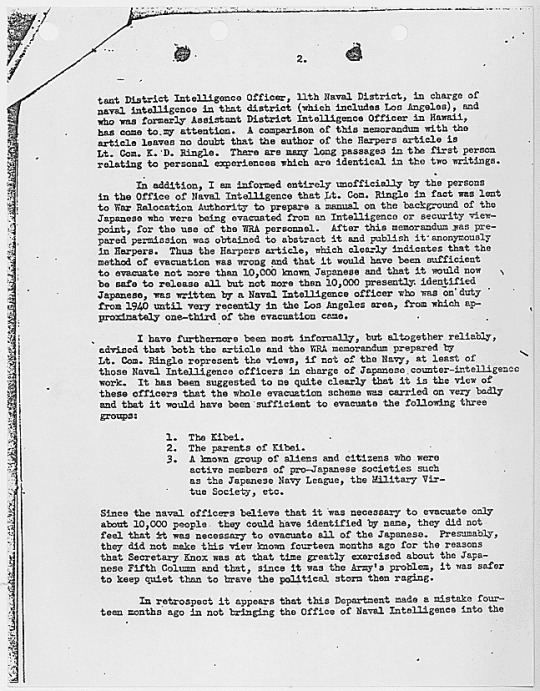


At the beginning of WWII, Naval Intelligence officers concluded that there were around 10,000 Japanese Americans who could pose a threat to the U.S.
Army General DeWitt used his authority to incarcerate 120,000.
U.S. v Korematsu, Exhibit Q, April 30, 1943.
Record Group 21: Records of District Courts of the United States
Series: Criminal Case Files
File Unit: United States v. Korematsu
Transcription:
Edward J. Ennis
Director
Exhibit Q
Department of Justice
Alien Enemy Control Unit
Washington
April 30, 1943
[stamp] DEPARTMENT OF [illegible]
SEP 1[illegible] 1951
DIVISION OF [illegible]
ATTORNEY GENERAL [end stamp]
MEMORANDUM FOR THE SOLICITOR GENERAL
RE: Japanese Brief
Last week with our draft of the [underlined] Hirabayeshi [end underlined] brief I transmitted to Mr. Raum somematerial which I thought he would find helpful in obtaining a background view of the context of this case. In particular, I sent him a copy of Harpers Magazine for October 1942, which contains an article entitled [underlined] The Japanese in America, The Problem and the Solution, [end underline] which is said to be by "An Intelligence Officer". without attempting to summarize this article, it stated among other things that:
1. The number of Japanese aliens and citizens who would act as saboteurs and enemy agents was less than 3,500 throughout the entire United States.
2. Of the Japanese aliens, "the large majority are at least passively loyal to the United States".
3. "The Americanization of Nisei (American-born Japanese) is far advanced."
4. With the exception of a few identified persons who were prominent in pro-Japanese organization the only important group of dangerous Japanese were the Kibei (American-born Japanese predominantly educated in Japan).
5. "The identity of Kibei can be readily ascertained from United States Government records."
6. "Had this war not come along at this time, in another ten or fifteen years there would have been no Japanese problem, for the Issei would have passed on, and the Nisei taken their place naturally in American communities and national life."
This article concludes: "To sum up: The 'Japanese Problem' has been magnified out of its true proportion largely because of the physical characteristics of the Japanese people. It should not be handled on the basis of the [underlined: individual], regardless of citizenship and [underlined: not] on a racial basis." (Emphasis in original.)
I thought this article interesting even though it was substantially anonymous. I now attach much more significance to it because a memorandum prepared by Lt. Con. X. D. Ringle, who has until very recently been Assis-
[handwritten in bottom right corner] #8 [end handwritten]
[page 2]
tant District Intelligence Officer, 1th Naval District, in charge of naval intelligence in that district (which includes Los Angeles), and who was formerly Assistant District Intelligence Officer in Hawaii, has come to my attention. A comparison of this memorandum with the article leaves no doubt that the author of the Harpers article is Lt. Com. K. D. Ringle. There are many long passages in the first person relating to personal experiences which are identical in the two writings.
In addition I am informed entirely unofficially by the persons in the Office of Naval Intelligence that Lt. Com. Ringle in fact was lent to War Relocation Authority to prepare a manual on the background of the Japanese who were being evacuated from an Intelligence or security viewpoint, for the use of the WRA personnel. After this memorandum was prepared permission was obtained to abstract it and publish it anonymously in Harpers. Thus the Harpers article, which clearly indicates that the method of evacuation was wrong and that it would have been sufficient to evacuate not more than 10,000 know Japanese and that it would now be sage to release all but not more than 10,000 presently identified Japanese, was written by a Naval Intelligence officer who was on duty from 1940 until very recently in the Los Angeles area, from which approximately one-third of the evacuation came.
I have furthermore been most informally, but altogether reliably, advised that both the article and the WRA memorandum prepared by Lt. Com. Ringle represent the views, if not of the Navy, at least of those Naval Intelligence officers in charge of Japanese counter-intelligence work. It has been suggested to me quite clearly that it is the view of these officers that the whole evacuation scheme was carried out badly and that it would have been sufficient to evacuate the following three groups:
1. The Kibei.
2. The parents of Kibei.
3. A known group of aliens and citizens who were active members of pro-Japanese societies such as the Japanese Navy League, the Military Virtue Society, etc.
Since the naval officers believe that it was necessary to evacuate only about 10,000 people they could have identified by name, they did not feel that it was necessary to evacuate all of the Japanese. Presumably, they did not make this view known fourteen months ago for the reasons that Secretary Knox was at that time greatly exercised about the Japanese Fifth Column and that, since it was the Army's problem, it was safer to keep quiet than to brave the political storm then raging.
In retrospect it appears that this Department made a mistake fourteen months ago in not bringing the Office of Naval Intelligence into the
[page 3]
controversy. I suppose that the reason that it did not occur to any of us to do this was the extreme position then taken by the Secretary of the Navy.
To have done so would have been wholly reasonable, since by the terms of the so-called delimitation agreement it was agreed that Naval Intelligence should specialize on the Japanese, while Army Intelligence occupied other fields. I have not seen the document, but I have repeatedly been told that Army, before the war, agreed in writing to permit the Navy to conduct its Japanese intelligence work for it. I think it follows, therefore, that to a very considerable extent the Army, in acting upon the opinion of Intelligence officers, is bound by the opinion of the Naval officers in Japanese matters. Thus, had we known that the Navy thought that 90% of the evacuation was unnecessary, we could strongly have urged upon Gen. DeWitt that he could not base a military judgment to the contrary upon Intelligence reports, as he now claims to do.
Lt. Com. Ringle's full memorandum is somewhat more complete than the version published in Harpers and I think you will be interested in reading it. In the past year I have looked at great numbers of reports, memoranda, and articles on the Japanese, and it is my opinion that this is the most reasonable and objective discussion of the security problem presented by the presence of the Japanese minority. In view of the inherent reasonableness of this memorandum and in view of the fact that we now know that it represents the view of the Intelligence agency having the most direct responsibility for investigating the Japanese from the security viewpoint, I feel that we should be extremely careful in taking any position on the facts more hostile to the Japanese than the position of Lt. Com. Ringle. I attach the Department's only copy of this memorandum.
Furthermore, in view of the fact that the Department of Justice is now representing the Army in the Supreme Court of the United States and is arguing that a partial, selective evacuation was impracticable, we must consider most carefully what our obligation to the Court is in view of the fact that the responsible Intelligence agency regarded a selective evacuation as not only sufficient but preferable. It is my opinion that certainly one of the most difficult questions in the whole case is raised by the fact that the Army did not evacuate people after any hearing or on any individual determination of dangerousness, but evacuated the entire racial group. The briefs filed by appellants in the Ninth Circuit particularly pressed the point that no individual consideration was given, and I regard it as certain that this point will be stressed even more, assuming that competent counsel represent appellants, in the Supreme Court. Thus, in one of the crucial points of the case the Government is forced to argue that individual, selective evacuation would have been impractical and insufficient when we have positive knowledge that the only Intelligence agency responsible for advising Gen. DeWitt gave him advice directly to the contrary.
[page 4[
In view of this fact, I think we should consider very carefully whether we do not have a duty to advise the Court of the existence of the Ringle memorandum and of the fact that this represents the view of the Office of Naval Intelligence. It occurs to me that any other course of conduct might approximate the suppression of evidence.
As I have said, my information that the Ringle memorandum represents the view of the Office of Naval Intelligence has come to me informally. I feel, therefore, that we have an obligation to verify my informal information. I believer that we should address an inquiry to the Secretary of the Navy, making reference to the Ringle memorandum, and stating that we have been advised that this represents the Navy's view and asking the Secretary if in fact the views of ONI, at the time of the evacuation, coincided with Com. Ringle's.
The Ringle memorandum originally came into my possession from WRA and we noticed the parallel between the memorandum and the article in this office. Attorneys for WRA furthermore are among the persons who have advised us that the Ringle memorandum represents the official Navy view. In view of the fact that any other information which I have obtained is highly confidential, I would prefer to refer in a letter to Secretary Knox only to WRA.
I have prepared for your consideration a draft of a letter which you might wish to send to Mr. Knox.
Edward J. Ennis
Director, Alien Enemy Control Unit
Attachment
#archivesgov#April 30#1943#World War II#WWII#Japanese American incarceration#Japanese internment#Asian American history#Japanese American history#US v Korematsu
63 notes
·
View notes
Text

It was the Day of Remembrance, and Pri wanted to be alone at the memorial. She was thinking about the injustice that occurred to her Japanese family. In one moment, they had a decent business that just made it through the Depression. The next, they were on a train heading to an assembly camp before being shipped out to Manzanar. The stories of the cold and the dust that entered the barracks, the thought of betrayal from their country just for being who they were. It's too much to think about. Especially for a soft soul like Pri. So, she sits there shivering, just wondering why. "Why us? Will something like this happen again?" The only she can do was pray for the best.
—-——-——-——-——-—
As much as I love my area, I can't ignore the dark history that surrounds it. Especially if it left a mark on the many cultures in the Central Valley. And with a day like yesterday (the Day of Remembrance), I had to make a story around it. So I made one about Pri due to her Japanese heritage. It's my way to address this injustice.
#furry art#furry#digital art#digital illustration#kcvulpinestudios#life beside the tracks#anthro art#anthro#anthropomorphic#red panda#anthro red panda#day of remembrance#japanese internment#california history#Central Valley#Central Valley history#california#furry character#furry sfw#sfw furry art#procreate#ipad art
18 notes
·
View notes
Text
Think reparations are impossible? The story of Japanese Americans proves otherwise
#remember japanese american internment camps#japanese american internment#japanese american#japanese#japanese internment#reparations#black americans#reparations for black americans
28 notes
·
View notes
Text
OK So Context
I kind of progressively lost my mind in college. What with the learning about the specifics of what is going on and how it relates to what has happened in the past. -and subsequently took the time to develop a series of presentations about why the US sucks.
Specifically, the interventions in Latin American, just the astoundingly predatory nature of American Capitalism domestically and The Police, like, as a concept.
Fast forward to the Summer of 2022 and I realized that working with an editor and publishing a book is hard and expensive but its measured in thousands not tens of thousands so I committed to doing that at some point in my life with this project, and began working on adapting the presentations with more research and more connections between these different expressions of White Supremacy.
I let the research balloon. There's just so much.
Anyway, the whole social media campaign thing was to distract me from pinning all that down. -and last month one of the members of my subreddit, u/acebush1, self immolated in the time it took to get around to responding to his most recent comment. That made this all very real. The US' support for Israel and it's foundation as a settler colonial state are critically relevant.
Right, so,. Last month someone asked me how to buy the book and that was the thing I had said to myself would mark the transition back to a writing and research focus rather than just research and learning social media.
Site is up. Its an email submission form with a set your own price stripe link.
#US Authoritarianism Project#Aaron Bushnell#US Politics#protest#writeblr#History#Colonialism#Imperialism#Police#Duopoly#Democracy#republicans#American Fascism#american exceptionalism#Slavery#Jim Crow#Segregation#Mass Incarceration#reservation#deportation#forced migration#sterilization#eugenics#ethnic cleansing#dred scott#japanese internment#guantanamo#trail of tears#US Authoritarianism#Anarchy
6 notes
·
View notes
Text

Following up on my last post, you should check out the unexpectedly heartwarming and edifying story of George Takei’s experience of “internment,” and how that affects his lifelong interest in social justice.
An excerpt for you:

“Single file! Line up here and board the train!”
“Train leaves in ten minutes! MOVE IT!”
We were loaded onto trains headed east, but not before being “tagged” like cattle.
“What is this—!”
“These tags are to be worn at ALL times.”
To my parents, it was yet another de-humanizing act. I just assumed it was my ticket for the train.
There were guards stationed at both ends of each car…

…as if we were criminals.
(coughing and wailing sounds)
“Daddy? Daddy? Where are we going?”

“We are going on a vacation. A very long vacation to a far-away place called Arkansas.”
“What’s it like there?”
“I…I’m not sure.”
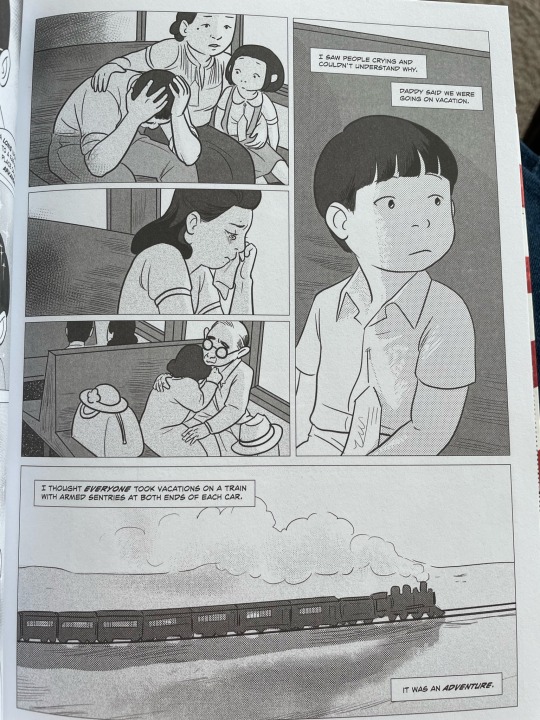
I saw people crying and couldn’t understand why. Daddy said we were going on vacation.
I thought EVERYONE took vacations on a train with armed sentries at both ends of each car.
4 notes
·
View notes
Photo
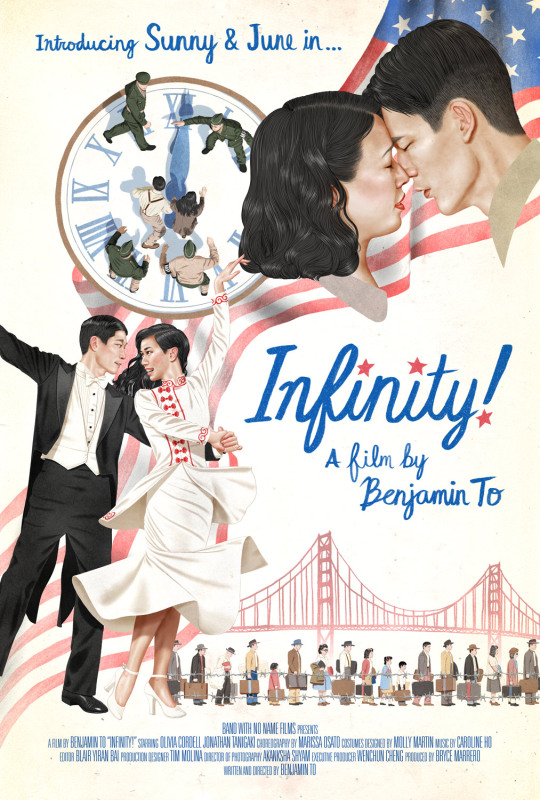
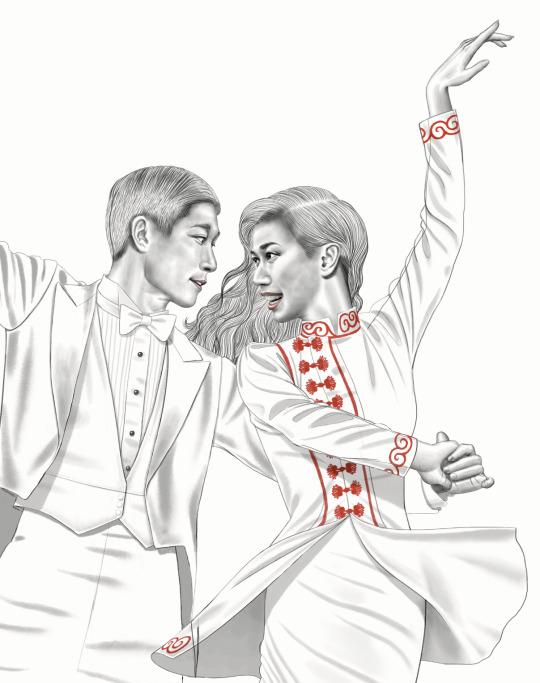


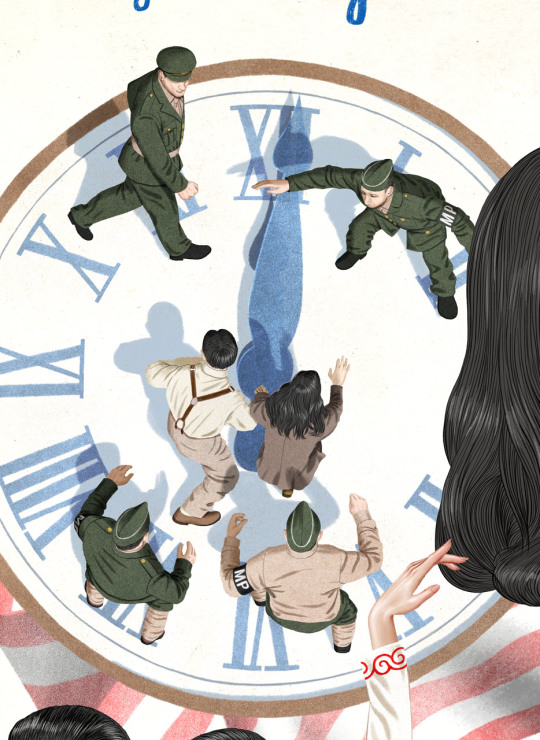

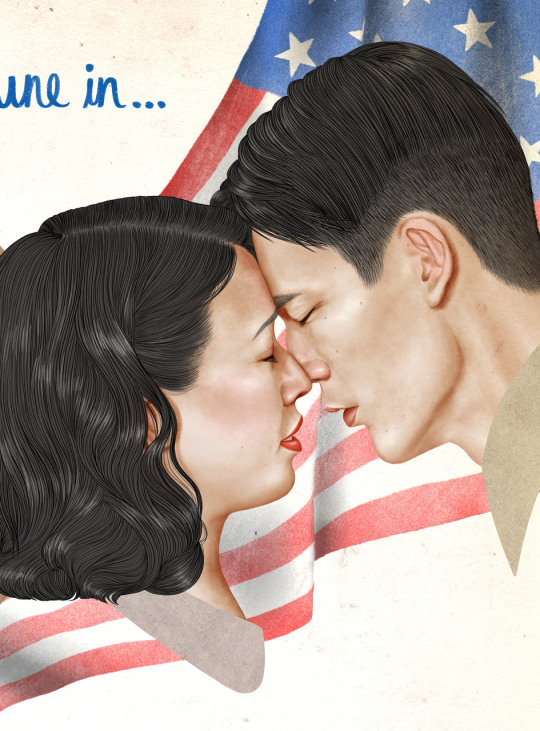

Infinity! A Japanese-American dance duo must choose between their passion or their lives as WWII concentration camps begin to rise in the U.S. Based on a real life dance duo Toy and Wing. A sad story forcing us to look at the shameful Japanese concentration camp history in the US. Director Benjamin To contacted me to make the key art poster for his short film and we settled on an American in Paris inspired vintage poster treatment. One Sheet size 27x40″. Staring Olivia Cordell and Jonathan Tanigaki
INFINITY! has been officially selected to make its world premiere at one of the biggest short film festivals in the world, the LA Shorts International Film Festival July 19-27, 2023. Congrats to the cast and crew.
#toy and wing#infinity!#benjamin to#jonathan tanagaki#concentration camp#japanese concentration camp#japanese internment#japanese internment camp#dance duo#ballroom dance#wwii#world war 2#sanfrancisco bay bridge#bay bridge#san francisico#japanese american#japanese americans#key art#la shorts international film festival#movie poster#film poster#short film#artists on tumblr#fyiart#illustration#poster design#poster illustration#poster art#jonathan tanigaki#olivia cordell
8 notes
·
View notes
Photo

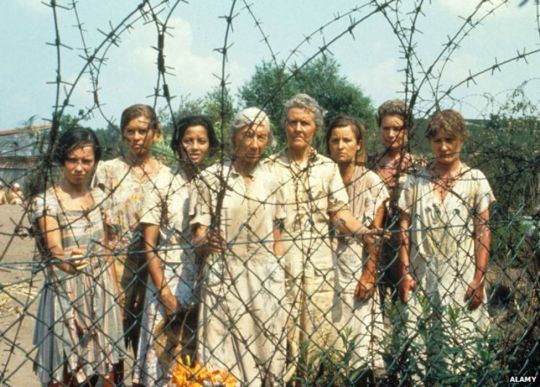
Doctor Margaret Thomson was born on August 20th 1902.
Born as Margaret Hunter in Leith, she went to Edinburgh Ladies College and then to the University of Edinburgh where she qualified as a doctor in 1926. Margaret married a rubber planter and went to live on Carey Island in what was then Malaya.
Margaret was one of six children and the third of four daughters of George Alexander Hunter, a bank secretary and solicitor, and his wife Margaret, née Robertson.
She had a comfortable upbringing and attended the Edinburgh Ladies College, an independent school now known as The Mary Erskine School. She went from there to Edinburgh University to study medicine, graduating in 1926 alongside one of her sisters.
Margaret Hunter became a GP in Lanarkshire where she met and married Daniel Thomson, a rubber planter and agricultural engineer by profession. The couple moved to a rubber plantation near Kuala Lumpur in what was then the Federated Malay States but which is now Malaysia, and Dr Thomson went to work in the local medical services.
When World War two broke out the Japanese army rampaged through Malaya in December 1941 and January 1942.
Dr Thomson and her husband went to Singapore where the British forces and civilian refugees were gathering. After the British and Commonwealth forces were soundly beaten, Dr Thomson tended to the wounded who were brought to the city.
The last ship to leave Singapore before its surrender was the SS Kuala and Margaret was on board, having been separated from her husband who was duly captured by the Japanese.
The Kuala was bombed at sea and sank, Dr Thomson being seriously wounded in the leg during the attack. The Japanese aircraft strafed the survivors in the water but she was rescued from the sea by Raymond Frazer of the RAF who got her into a lifeboat. There she cared for other wounded passengers using wreckage from the ship as makeshift splints, and then took part in an epic eight-hour row before the lifeboat was taken by Chinese fishermen to relative safety on Kebat and then Senajang islands.
There, despite her serious leg wound, she set about organising the medical care of the wounded and injured, carrying out several emergency operations.
Her wounded thigh turned septic and she was taken by stretcher to Sinkep from where she left with other women survivors to try and evade the Japanese. She was captured in Sumatra, however, and imprisoned in the brutal Djambi jail and then an even more primitive prisoner of war camp at Irenelaan, where another Scottish inmate was Norah Chambers who organised a choir to maintain morale.
The guards refused to pass on Red Cross medical supplies and Dr Thomson had to endure the deaths of many of her patients in the camp.
News of her courage on board the Kuala had been passed back to London and in August 1943 she was awarded the MBE “for her resolution and disregard of self, her sacrifice and admirable courage”, as stated in her citation.
Unbeknown to Thomson, her husband had been captured and made to work on the infamous Burma railway. Both of them survived, however, and returned after the war to the rubber plantation where she set up a health clinic.
The Thomsons came back to Scotland in 1950 and set up what was described as an innovative farm near Huntly. Daniel Thomson died in 1971 and Margaret lived on at Huntly until her own death on June 16, 1982 at the age of 79.
Her story was mentioned in several books and she really did advise the BBC on Tenko, but she never enjoyed talking about her wartime experiences. She never once watched an episode of the series.
There is no great monument to Dr Margaret Thomson as far as I know, but then there are precious few memorials to the women and men like her who were civilians who made their own contribution to the war effort.
62 notes
·
View notes
Text
For Takei, the story of what happened to his family – and the lies that were spread to justify the racist imprisonment of Japanese people in America – is eerily familiar in today’s world events.
“People of prejudice or ignorance or insecurity will try to divide people and intimidate people, but to let them divide us would be a dangerous thing to do.”
25 notes
·
View notes
Text
Random thing but I remember the first day of sociology class my prof passed out photos of the Japanese internment camps and the first student that she called on says with full confidence “Those are Chinese people, they’re being discriminated against.” 🤓🤓
Bruh my family didn’t get forcibly interned for your dumbass to say that they were Chinese (it literally said Japanese on one of the photos)
Anyway, it’s very disheartening to know how many people don’t know what happened to Japanese Americans in the internment camps and how it’s affected our culture. I’m here to answer any questions and elaborate further, but it’s unfortunately not well known.
#japaneseamerican#japanese#japanese internment#we were in the japanese internment camps#internment camp#bruh
3 notes
·
View notes
Link
B.C. Premier John Horgan committed a $100 million endowment Saturday to address the lasting effects of the internment of Japanese Canadians in the province during the Second World War.
Horgan made the announcement on Saturday from the Steveston Martial Arts Centre, the oldest Japanese-style dojo in North America, in Richmond B.C.
It comes on the 80th anniversary of the first arrivals of Japanese Canadians to the Greenwood, Kaslo, New Denver, Slocan City, and Sandon Internment Camps in 1942.
"This endowment will not change the past, but it will ensure that generations that are with us still, and those that come after, will have the opportunity to see something positive coming out of what was clearly a very, very dark period in our collective histories,'' Horgan said at the Saturday news conference.
Continue Reading.
Tagging: @politicsofcanada
#Japan#Japanese#japanese internment#British Columbia#cdnpoli#canada#canadian politics#canadian news#canadian#Racism#BC NDP
105 notes
·
View notes
Photo
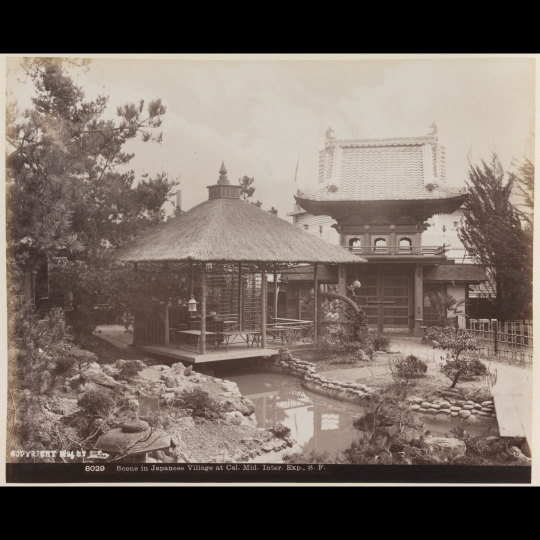



Did you know that San Francisco’s famous Japanese Tea Garden, found in Golden Gate Park, was originally created as a “Japanese Village” exhibit for the California Midwinter International Exposition, a World’s Fair, in 1894?
When the fair closed, Japanese landscape architect Makato Hagiwara and Superintendent John McLaren agreed to allow Hagiwara to maintain a permanent Japanese garden as a gift for posterity. Hagiwara became the garden’s caretaker and expanded the garden from one to about five acres. He and his family lived in the garden until 1942, when they were forced to move into internment camps alongside 120,000 other Japanese Americans. After the war, the Hagiwara family was not allowed to return to their garden home.
The Japanese Tea Garden remains, however, and is the oldest public Japanese garden in the United States. In 1974, a plaque was dedicated to the Hagiwara family and placed in the garden, and the road bordering the garden was named Hagiwara Tea Garden Drive in 1986.
#Japanese Tea Garden#Golden Gate Park#San Francisco#AANHPI Month#AANHPI#AAPI Month#AAPI#Japanese History#Japanese Internment#California#History#Libraries#Librarian
49 notes
·
View notes